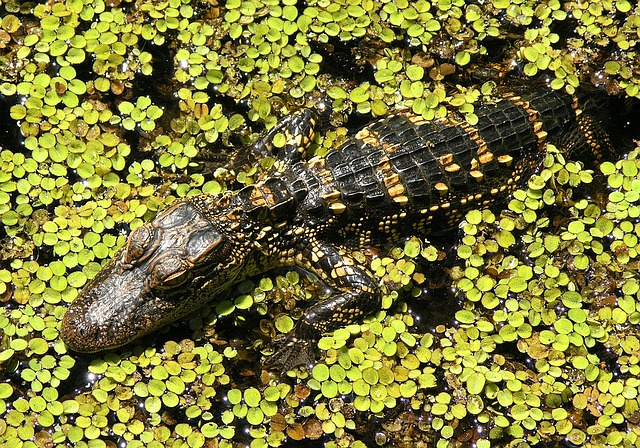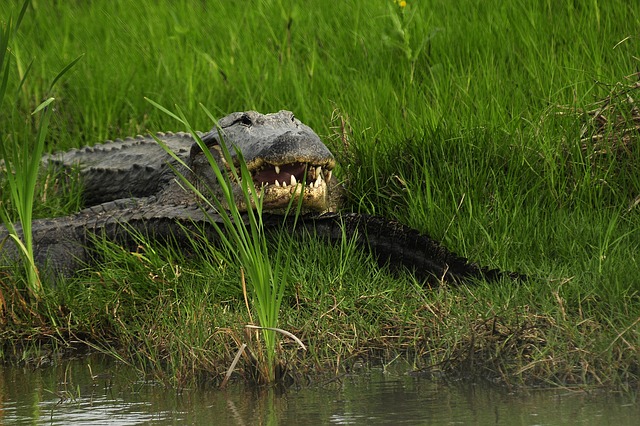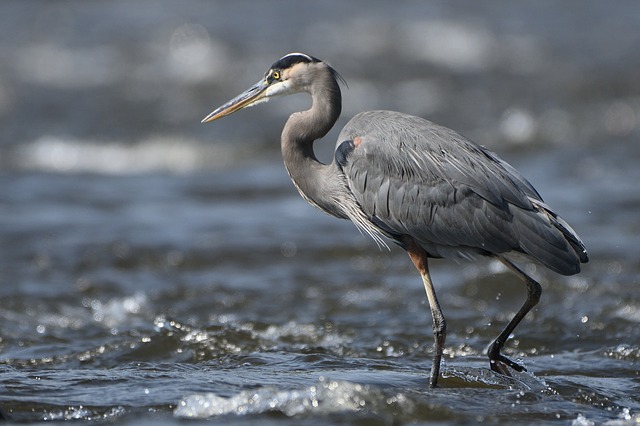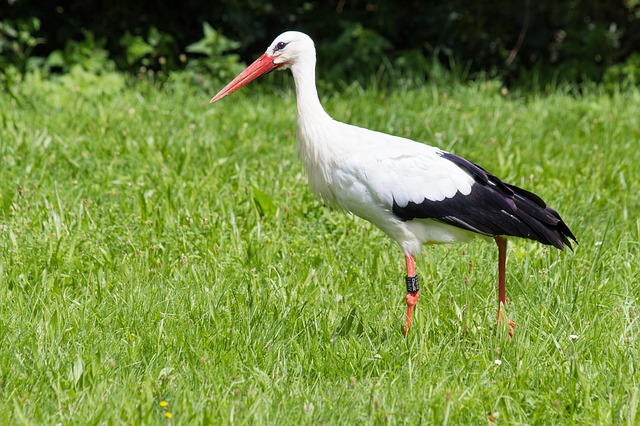
The American alligator is a large reptile native to the southeastern United States. This carnivorous species lives primarily in freshwater swamps, rivers, marshes, and lakes. And while they may seem scary to some, they are fascinating creatures, just take a look at some of these amazing American alligator facts!
Alligators Got Their Name From The Early Spanish Settlers
When Spanish settlers and soldiers came to Florida they called the alligator “el lagarto” which means, “the lizard.” The name changed over time and became “allagarter,” and then eventually what we know today as the “alligator.”
There Are Only Two Species Of Alligator In The World
The American alligator is one, while the other is the Chinese alligator. While both are freshwater species, the Chinese alligator is much smaller typically only reaching seven feet in length. Due to habitat loss, Chinese alligator numbers have declined drastically in recent years.
Alligator Hatchlings Have Incredibly Low Survival Rates
It’s estimated that between as many as eighty to ninety percent of alligator hatchlings are ultimately eaten by predators. This includes animals such as raccoons, largemouth bass, otters, herons, snakes, and larger alligators. However once the baby gators reach around four feet in length they are generally safe from virtually all predators, except for their own kind.
The Alligator Is A Long-Lived Reptile
The average American alligator’s lifespan is between thirty and thirty-five years in the wild. That is of course if it can get past all of the predators which eat young gators. In captivity, alligators are known to live for fifty years or longer.
There Are A Few Ways To Tell Alligators And Crocodiles Apart Visually
When it comes to color alligators are generally darker and are almost black. They also have a broader and more rounded snouts than crocodiles which in contrast have narrower and more triangular-shaped snouts.
Another way you can tell alligators and crocodiles apart is to observe their mouths. When the mouth of an alligator is closed the fourth tooth on either side of the lower jaw cannot be seen since it fits into an internal socket in the upper jaw. With crocodiles, the fourth tooth can always be seen when the mouth is closed. By taking a look at both crocodile and alligator pictures these differences will be easily apparent.
The Biggest Alligator Ever Killed Was Recorded At Nineteen Feet And Two Inches In Length
That giant alligator was actually killed in 1890 in southern Louisiana and weighed close to two thousand pounds. While that specimen was absolutely enormous the average male gator typically reaches between ten and fifteen feet in length and weighs up to one thousand pounds.
The American Alligator Was Placed On The Endangered Species List In 1967
Thanks to the protection offered by the Endangered Species Act, this species has made a full recovery. It was taken off the list after just twenty years. Fast forward to the present and it’s estimated there are well over one million of these reptiles alive today.
The Sex Of An Alligator Is Determined By Nest Temperature
Alligators lay their eggs in nests. Warmer nests (those that are ninety-one degrees Fahrenheit, or hotter) produce males. And nests that are cooler (those that are eighty-six degrees Fahrenheit or less) produce female alligators.
The Alligator Is An Excellent Swimmer
It has webbed feet and a strong tail which help it to maneuver easily in the water. In fact, it is that powerful alligator tail that also propels them in the water and allows them to swim at speeds of up to twenty miles per hour.
Alligators Are Top Predators With A Wide-Ranging Diet
They will eat crustaceans, turtles, invertebrates, snakes, fish, and a variety of mammals including feral hogs and sometimes even black bears. Waterfowl and wading birds are also on the menu.
(It’s no wonder using an alligator decoy to protect ponds from backyard pests such as herons, geese, and raccoons is so effective). Interestingly one of the least known alligator facts is that they also sometimes consume fruit. Citrus fruits, wild grapes, and elderberries have all been found in the stomachs of deceased gators.
Raccoon Pictures
Raccoons are easily recognizable by their black face mask and ringed tail. And there are many fascinating things about this intelligent nocturnal species. So we’ve compiled some of the best raccoon pictures to show you just how amazing and unique they are. Raccoon...
Eagle Pictures
Eagles are large powerful raptors with sharp talons and beaks. These apex predators are typically at top of the food chain and there are many interesting things about them. So we’ve compiled some of the best eagle pictures to show you just how amazing they are. Bald...
Nutria Pictures
Nutria are large semi-aquatic rodents from South America. In the United States where they were originally imported for the fur industry, they are an invasive species. Despite their pest status, there are many interesting things about them. So here are some of the best...
Stork Pictures
Storks are tall wading birds with long legs and necks. These amazing birds have many fascinating things about them. And we’ve compiled some of the top stork pictures to help show you just how interesting and beautiful they are. White Stork The white stork has a body...
Alligator Pictures
The American alligator is a large predatory reptile that inhabits the southeastern United States. It’s a fascinating animal with many interesting things about it. And we’ve collected some of the best alligator pictures to help show you just how amazing they are....
How Long Do Great Blue Herons Live?
The life expectancy of birds is known to be closely related to their size. So as the biggest heron species in North America, how long do great blue herons live? The average life expectancy for these large birds is around fifteen years. However, surviving their first...
Where Do Great Blue Herons Live?
The great blue heron is considered to be the most widespread heron in North America. So exactly where do great blue herons live? Here’s what you’ll want to know. Great Blue Heron Range The great blue heron is found throughout most of the North American continent. In...
Where Do Great Blue Herons Nest?
While many of us have seen great blue herons their nesting habits often remain a mystery to most people. That’s because they purposely nest in hard-to-reach places. So where do great blue herons nest? Here’s the answer. A Colony Nester Typically great blue herons nest...
Do Great Blue Herons Migrate?
Do great blue herons migrate? This is something many people wonder about, especially if they’ve seen a heron during the cold winter months. And the answer is both yes and no. Here’s what you’ll want to know. Great Blue Heron Range The great blue heron has a large...
Great Blue Heron Pictures
Few species of birds are as tall, elegant, and attractive as the great blue heron. So we’ve compiled some of the best great blue heron pictures for you to admire and help you to learn more about this amazing bird! Great Blue Heron Head The head of the great blue heron...
What Do Snapping Turtles Eat?
Many people are familiar with the fact that snapping turtles have an incredibly strong bite. They use their strong jaws and sharp beak not just for defense but also for catching food. So what do snapping turtles eat? Here's what you'll want to know. Snapping turtles...
Birds That Look Like Egrets
Egrets are predatory birds that hunt and live in a range of both freshwater and saltwater habitats. These birds are usually white, and have S-shaped necks, long legs, and dagger-like beaks. However, they are often mistaken for several other types of birds that look...
Birds That Look Like Storks
Storks are large wading birds with robust bills and long legs. These tall carnivorous birds are well-known for their wide wingspans and also for building huge nests. However, they are often confused with several other bird types that have a similar appearance. So...
Birds That Look Like Herons
Herons are tall birds with long slender legs and necks. And they often wade in the water when hunting for food. Yet there are several other types of birds that may be mistaken for them. To make things more confusing many of these birds also spend time in the water and...
Great Blue Heron Facts
The great blue heron is named for its size and the grey-blue color on its wings, stomach, and back. This species has many fascinating things about it. So here are the top great blue heron facts. It's The Largest North American Heron The great blue heron is a big bird...
Are There White Herons?
Are there white herons? This is something many people wonder especially after seeing a tall all-white bird. The answer is yes! And here’s a fast introduction to them. A White Color Morph Most people are familiar with the great blue heron, a large predatory and...
Great White Heron Facts
While many people are familiar with the great blue heron, they are often surprised to find out that there’s also a great white heron. There are many things you’ll want to know about this stunning bird. So here are the top great white heron facts. The Great White Heron...
What Animals Eat Herons?
Because of their size and long sharp beaks, it can be hard to imagine that herons have any natural predators. While they do, they definitely don’t have nearly as many predators as most other types of birds. So what animals eat herons? Predators Of Adult Herons For...
What Do Herons Eat?
Great blue herons are often seen slowly wading in shallow water hunting for food. You may have even spotted one of these large birds in your own backyard pond. This leaves many people wondering: “What do great blue herons eat?” And here’s everything you’ll need to...
What Do Green Herons Eat?
The green heron is a secretive and small heron species. What it lacks in size however it makes up for in intelligence. It is particularly well-known for how it uses its smarts when hunting for food. So what do green herons eat? Read on to find out. Meet The Green...
























